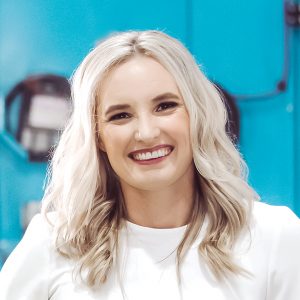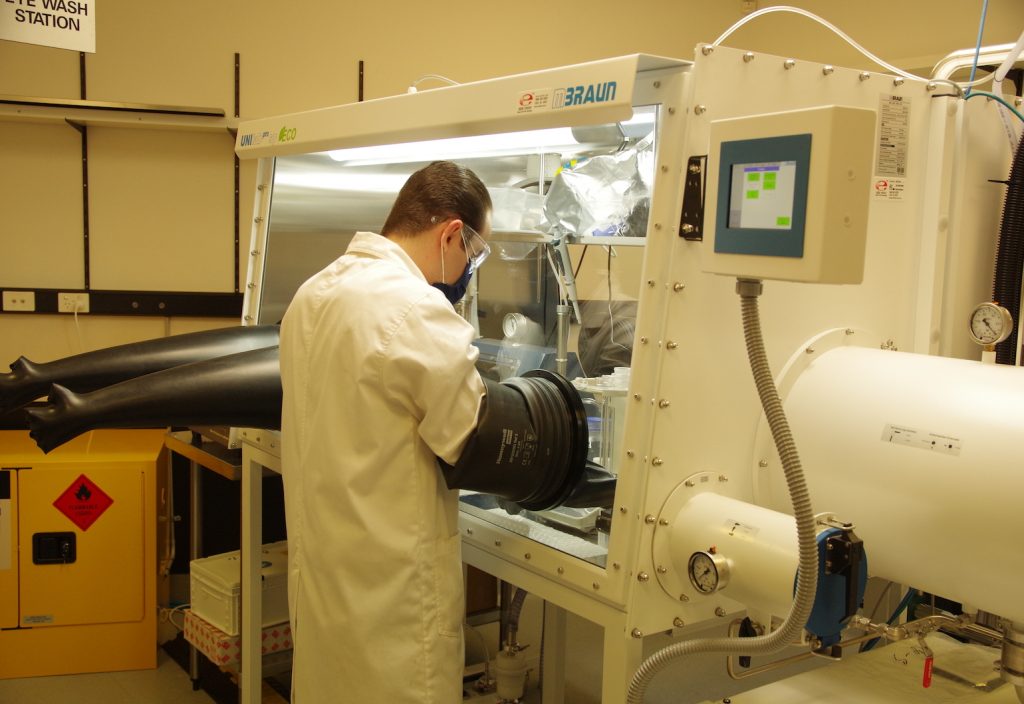Commercialising university research is an enduring issue for Australian manufacturers. So what can be done to bridge the gap between the lab and factory floor?
The need to improve collaboration between the manufacturing and university sectors is an enduring issue and a fantastically complicated, multi-part problem.
Even though politicians occasionally attempt to improve the connection, the results, at least according to various international comparisons, show Australia continues to do poorly. The problem? The nation is very good at public research, but poor at turning this into private impact.
Figures in a recent review by the University Research Commercialisation Expert Panel show why the problem persists. Australia has 0.34 per cent of the world’s population but 2.7 per cent of its scientific output. Of the nation’s research, 85 per cent is world standard or better.
However, it ranks last in the OECD on “business collaboration on innovation with higher education or government institutions”.

“Businesses are trying to achieve a business outcome based on a strategic priority based on a challenge that they’re having within their operations,” explained Shay Chalmers FIEAust CPEng, Managing Director of Strategic Engineering Australia, on the disconnect between manufacturers and public researchers.
“And often, research is focused on understanding the why, and delivering against publications.”
A plan for the future?
The most recent attempt at better aligning the goals of the two, manifesting in new products, jobs and economic activity, is the Australian Government’s University Research Commercialisation Action Plan.
It aims to increase the return on investment from university research, as public research and development (R&D) outpaces private R&D. The latter grew five per cent from the 2010-11 financial year to the 2019-20 one, while the former flatlined.
Higher education’s share of Australia’s total R&D spend grew from 26 per cent to 36 per cent over the period.
If the latest attempt to link private capital with public smarts works, it will see more ideas with potential make it through the “valley of death” between Technology Readiness Level (TRL) 3 and TRL 7 — proof of concept to proof of scale — with new products commercialised by established or new businesses.
“A bunch of countries would love to be in the position we’re in — with how well equipped our universities are — and we’ve got some world-renowned experts in these fields too,” says Gary Walsh, General Manager at BNNT Technology and Director at commercialisation business Australian Innovation Centre (AIC).
BNNT was formed by AIC and Deakin University in 2018 to spin out a world-first process to produce boron nitride nanotubes at scale, and was later acquired by ASX-listed PPK Group.
PPK has subsequently spun out a collection of new ventures to commercialise the “super material” in applications ranging from lithium sulfur batteries to dental ceramics to novel composite alloys. Walsh explains that the number one reason university collaborations are important for the company was to provide technical credibility, followed by access to exceptional equipment and experts.
University of Queensland (UQ) Professor Stuart Crozier says that there are more drivers at the federal and state level for researchers to take their work into commercial use than when he first journeyed into translation more than two decades ago.
Crozier is a former Director of Biomedical Engineering at UQ. Image correction technology he developed and licensed to Siemens and GE has been used in an estimated two-thirds of all high-end MRI machines made since 1997. Subsequent UQ spinouts using his intellectual property have included MRI company Magnetica, and, more recently, listed microwave-based brain scanner developer EMVision.
“The interest and the increasing number of schemes to try and assist universities linking with industry are … major improvements,” Crozier told create. “Where things remain the same is that getting early-stage venture capital is still incredibly difficult in Australia. People are very risk averse. I think there needs to be a better understanding of companies who are start-ups and what they can achieve and how long it’s going to [take]. And we need early-stage investors that are prepared to go for a ride for several years in reality. And that’s very difficult.”
Barriers to success
Phil Morle, Partner at CSIRO “venture science” arm Main Sequence, argues that things have improved a great deal in only a few years. As an example, he cites MSV’s total fund — currently $490 million — which is bigger than the entire amount of venture capital available nationally when he founded Australia’s first startup incubator, Pollenizer, in 2008.
While the situation is improving, Australia is not the most favourable place in the world to form any new business. Only two Australian cities — Sydney and Melbourne — made consultancy Startup Genome’s top 40 list of ecosystems internationally, and neither scored higher than three out of 10 when rated on access to funding.
Money aside, there is a host of recognised barriers between industry and research, including the geographic spread of the nation, language and priority differences between the worlds of finance, companies and universities, and the size of companies.
The Innovative Manufacturing CRC’s Manufacturing Innovation Manager Dr Matthew Young began his career in an industry PhD with Comalco, before moving from metal to composites. He worked 14 years at Boeing, including developing materials and processes on the 787 moveable trailing edge, then as Chief Engineer at Hengshen in China, before returning home to the CRC. The IMCRC oversees 70 projects, with most of these being larger, multi-year, multi-partner efforts, but also a collection of smaller projects under its Activate program.
Young believes company size and local attitudes are parts of the puzzle. Australia’s business landscape is characterised by a large number of small companies: on 30 June 2021, 97 per cent of Australian businesses had fewer than 20 workers.
“Once you get to a certain scale and you realise your growth potential and where you need to go, collaboration becomes more an integral part of the business rather than with hand-to-mouth operations, so size is a contributing factor,” Young told create.
“As well, in Australia we have a bit of an issue about identifying who is really our competition … There’s so many small businesses that would benefit from business-to-business collaborations as well as business-to-university collaborations, rather than identifying their competition as the company capable of doing the same thing a few blocks away.”
Chalmers agreed that, at the smaller end of the scale, there isn’t a lot of room to think about much beyond fighting fires and getting products made and out the door.
“Innovation internally plays a really big part of that, but what can sometimes be challenging is actually looking outwards to see what’s going on in the research sector,” she said. “How does that apply to my business and how do I engage in a meaningful way? I think that’s an ongoing challenge.”
Getting University Research Commercialisation to work
As the latest attempt to get the collaboration dance on a better footing, the Federal Government announced a Trailblazer Universities Program in November 2021. This was part of a broader University Research Commercialisation (URC) Action Plan, announced in February this year. Other major elements of the plan include the stage-gated Australia’s Economic Accelerator, 1900 industry PhDs, and 800 fellowships.
The Trailblazer program promises $50 million in commercialisation support over four years to four successful universities with successful business cases, and a further $8 million in access to CSIRO facilities. Business cases for universities are assessed on proposed reforms to link with industry, promote researchers with industrial impact, and implement industry-friendly IP arrangements.
Each university hub must be based around one of the six National Manufacturing Priorities set in 2020 (defence, space, food and beverage, resource technology and critical minerals, medical products, or recycling and clean energy).
The AEA would provide 96 grants worth up to $500,000 each at stage one, 36 grants up to $5 million at stage two, and a third stage administered by MSV — which gets an additional $150 million funding — to back between 33 and 50 companies.
Trailblazer University funding is scheduled for July 2022 and the AEA will be taking applications at a similar time.
“It was really encouraging that the government is taking this seriously, that they’re listening, and I actually like the idea that they focused a lot on universities and … what is needed in terms of creating a good innovation and start-up ecosystem,” said Philip Longley, Senior Policy Advisor at Engineers Australia, though he added that the plan seemed “an easy fix” at the same time.
“Because tax is hard. Deregulation is hard. And maybe part of the problem is if you are an investor, from a tax perspective, it’s really uncompetitive to invest in Australian start-ups compared to the US and the UK. So rather than looking at what I would call structural issues, which are overregulation and basically an ill fit-for-purpose tax system, they’re just throwing more money at it.”
Another criticism could be that these new schemes will just be ditched as part of a long, confusing and bipartisan history of chopping and changing industry policy every few years when a new government takes power.
Extracting value
As with industry policy since October 2020 and the Modern Manufacturing Strategy launch, projects that fall outside the six priority sectors will not qualify for support. Young described the targeting as a double-edged sword: the focus is where a lot of opportunity exists in manufacturing, but those in, say, the automotive supply chain or building products sector are left out.
Chalmers also saw both the upside and downside but agreed that since a country of 25 million can’t hope to be great at everything, focus is wise. Both agreed that manufacturing was perhaps best viewed as an enabler.
A state-of-the-art machine shop could, for example, supply any number of different parts of manufacturing, and it would be smart to diversify. Grant support, however, is siloed. According to Morle, a lot has changed in the start-up environment in Australia, and it is all for the better.
Career researchers are starting to understand that they have a chance to take their inventions to the market and maybe enjoy a level of agency far better than if they were “stuck in that grant cycle”. Crozier believes more must be done to offer researchers a way into industry and out of the “publish or perish” life, if that’s what they want. But if their key performance indicators are to write papers, then they will continue doing that.
“There hasn’t yet been enough of a move for acknowledgement of researchers to work with industry, who perhaps don’t publish that work but patent it, and who participate in creating new intellectual property and then help to translate that into products,” he said.
“I think broadly across the sector, there is an acknowledgement that that needs to happen better, but it hasn’t happened yet.”
Chalmers believes that bringing researchers and their work into manufacturing businesses can be incredibly worthwhile, but also requires patience. It can be hard to look at a problem in depth when the imperatives are to put out fires and get products out of the door.
“And that’s something that research does really well: I spend a lot of time being a nerd and reading theses and people’s PhD papers and reading all this stuff because there’s so much that we can take from it and so much value we can derive from our academic community,” Chalmers said.
“But it takes time to figure out how to actually extract that value in a meaningful way for your business. It’s kind of like that translation between academic value and how that relates to commercial value. That translation can be really, really challenging.”
